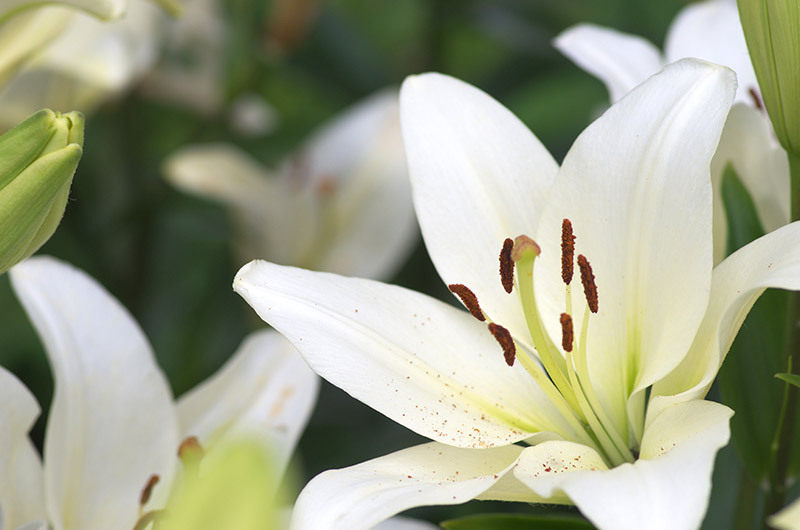How to Propagate Hydrangeas and Expand Your Garden
If you're seeking an exciting and cost-effective way to multiply the beauty of your garden, learning how to propagate hydrangeas is a valuable skill. These prolific, colorful shrubs are beloved by many for their stunning, pom-pom clusters of blooms and resilient nature. Fortunately, hydrangeas are among the easiest garden plants to propagate, allowing you to fill your landscape with their vivid hues and lush foliage without needing to buy new plants.
Why Propagate Hydrangeas?
- Cost Savings: Cultivating new hydrangea plants from your existing ones eliminates the need to purchase additional shrubs.
- Healthy, Vigorous Plants: Propagation yields genetically identical offspring, ensuring you replicate your favorite cultivars' best qualities.
- Garden Expansion: Easily expand your hydrangea beds or share plants with friends and neighbors.
This article will guide you through the best methods for hydrangea propagation, including stem cuttings, layering, and division. You'll also find practical tips on when and how to propagate hydrangeas for maximum success. Let's dive in!

Understanding Hydrangea Types and Their Propagation
Not all hydrangeas propagate in the same manner. The most common types you may encounter include:
- Hydrangea macrophylla: Bigleaf hydrangea
- Hydrangea paniculata: Panicle hydrangea
- Hydrangea quercifolia: Oakleaf hydrangea
- Hydrangea arborescens: Smooth hydrangea
- Hydrangea anomala petiolaris: Climbing hydrangea
Most of these types can be multiplied by cuttings, although climbing hydrangea and oakleaf hydrangea sometimes benefit from layering or division as well.
When is the Best Time to Propagate Hydrangeas?
Knowing the right time to propagate hydrangeas can greatly increase your success rate. The key propagation periods are:
- Early Summer: For softwood cuttings, when new growth is still flexible.
- Late Summer to Early Fall: For semi-hardwood or hardwood cuttings, once the current year's growth begins to mature and harden.
- Spring or Fall: For dividing hydrangea clumps, when plants are dormant or just starting to grow.
For most home gardeners, propagating hydrangeas from cuttings in late spring to early summer offers the highest success.
How to Propagate Hydrangea Cuttings
Step 1: Gathering Materials and Preparing Cuttings
You'll need the following:
- Sharp, sanitized pruning shears
- Rooting hormone (optional but helpful)
- Small pots with drainage holes
- Potting mix (a blend of peat, perlite, and sand works well)
- Translucent plastic bags or a propagator
- Water spray bottle
- Select a Healthy Stem: Choose a non-flowering stem with at least 2-3 leaf nodes. Avoid stems that have already flowered, as these may not root successfully.
- Cut Just Below a Node: Using your shears, take a 4-6 inch cutting just below a leaf node.
- Remove Lower Leaves: Strip the lowest pair of leaves to expose the nodes where roots will form.
- Trim Large Leaves: If leaves are large, cut them in half to reduce water loss during rooting.
Step 2: Rooting the Cuttings
- Dip in Rooting Hormone: Lightly tap the cut end in root hormone powder to encourage root growth (optional but increases success).
- Plant the Cutting: Insert the cuttings into pre-moistened potting mix, burying at least one leaf node.
- Maintain Humidity: Cover the pot with a plastic bag or put it in a propagator to retain moisture.
- Keep Moist & Warm: Place the pots in a location with bright, indirect light and keep the soil moist but not soggy.
Step 3: Transplanting Rooted Hydrangea Cuttings
- Roots usually develop in 2-4 weeks. Gently tug on the stem; if there is resistance, roots have formed.
- Gradually acclimate the new plants to outdoor conditions by removing the plastic cover over several days.
- Transplant to larger pots or your garden bed once cuttings are well-rooted and showing new growth.
How to Propagate Hydrangeas by Layering
Another effective way to multiply your plants is by layering hydrangea stems, a method where you encourage a branch still attached to the parent plant to root in the ground.
Step-by-Step Hydrangea Layering
- Select a Flexible, Healthy Branch: Choose a stem near the outer edge of the plant that can touch the soil.
- Wound the Stem: Nick the side of the stem where it will touch the soil to stimulate root growth.
- Bury the Stem: Push the stem into a shallow trench (1-2 inches deep). Secure the buried section with a bent wire or rock.
- Wait for Roots: Keep the area moist. Roots should form in a few months, often by the following spring.
- Sever and Transplant: Once roots are well developed, sever the new plant from the parent and move it to its desired location.
Layering hydrangeas works especially well with oakleaf and climbing hydrangeas, which can be slower to propagate from cuttings.
How to Propagate Hydrangeas by Division
For hydrangea varieties that grow from multiple stems, such as smooth hydrangea (Hydrangea arborescens) and panicle hydrangea, division is a reliable propagation method.
Dividing Hydrangea Clumps
- Choose the Right Season: Divide in early spring (before new growth starts) or fall (after blooming and leaf drop).
- Dig Up the Plant: Use a spade to lift the entire hydrangea root ball from the ground.
- Separate by Hand or Knife: Gently tease apart the root ball into two or more sections, ensuring each has several stems and roots.
- Replant Immediately: Place divisions into prepared holes at the same depth as before, water well, and mulch to conserve moisture.
Dividing hydrangeas gives instant new shrubs and is an excellent method for mature, overgrown clumps.
Hydrangea Propagation: Troubleshooting and Tips
- Keep Cuttings Out of Direct Sun: Too much sun can dry out and kill new cuttings. Use dappled shade or indirect light.
- Humidity is Essential: Hydrangeas lose significant moisture through their large leaves. Maintain high humidity while cuttings root.
- Be Patient: Some methods, like layering, take several months before a new plant is ready. Monitor progress without disturbing roots.
- Label Your Cuttings: If you're propagating different varieties, use plant labels to keep track.
Common Mistakes in Hydrangea Propagation (and How to Avoid Them)
- Using Flowering Stems: These rarely root successfully; always use non-blooming growth for cuttings.
- Poor Hygiene: Dirty tools can transmit disease. Always sterilize pruners and pots.
- Overwatering: While hydrangeas need moisture, soggy soil leads to rot. Ensure pots have good drainage.
- Forgetting About Light: Too much or too little light can prevent rooted cuttings from thriving. Aim for bright, indirect sunlight.
Aftercare for Newly Propagated Hydrangeas
Once your hydrangea cuttings, layers, or divisions are established, follow these aftercare tips for lush, vigorous growth:
- Gradual Acclimatization: Harden off new plants by exposing them slowly to outdoor conditions over a week.
- Consistent Moisture: Keep soil evenly moist (but not waterlogged) to support active growth and root development.
- Mulching: Apply a 2-3 inch layer of organic mulch around the base to conserve water and suppress weeds.
- Fertilization: After a few weeks, provide a balanced, slow-release fertilizer suitable for hydrangeas to encourage healthy foliage and blooms.
- Monitor for Pests and Diseases: Keep an eye out for leaf spots, powdery mildew, and insect pests--treat promptly if noticed.

Frequently Asked Questions About Hydrangea Propagation
How long does it take to root hydrangea cuttings?
Hydrangea cuttings typically develop roots within 2-4 weeks under optimal humidity and temperature conditions.
Can I propagate hydrangeas in water?
Yes, propagating hydrangeas in water is possible--just place cuttings in a jar of water and wait for roots to form. However, plants started in water may struggle when transitioned to soil, so rooting in potting mix or a soilless medium is recommended for stronger, more resilient roots.
Should I use rooting hormone when propagating hydrangeas?
Using a rooting hormone is optional but can significantly improve your success rate, especially with woodier or semi-hardwood cuttings.
When can I plant my new hydrangeas outside?
Once cuttings or divisions show vigorous new growth and well-developed roots, they're ready for outdoor planting--generally after the risk of frost has passed.
Wrapping Up: Multiply the Magic of Hydrangeas in Your Garden
Propagating hydrangeas is a rewarding opportunity to expand your garden's beauty while learning more about these enchanting shrubs. Whether you prefer taking cuttings, layering stems, or dividing mature plants, hydrangea propagation is simple enough for any gardener to master. By following the clear steps and tips outlined in this guide, you'll soon enjoy an abundance of new hydrangea plants--perfect for transforming empty corners of your yard or sharing with appreciative friends.
Start propagating hydrangeas today and watch your garden bloom with color and life season after season!
- Remember: Patience, persistence, and gentle care are your best allies as you learn how to propagate hydrangeas and expand your floral display.
For more tips and inspiration on making the most of your garden, explore related articles on hydrangea care, pruning, and seasonal landscaping ideas.

